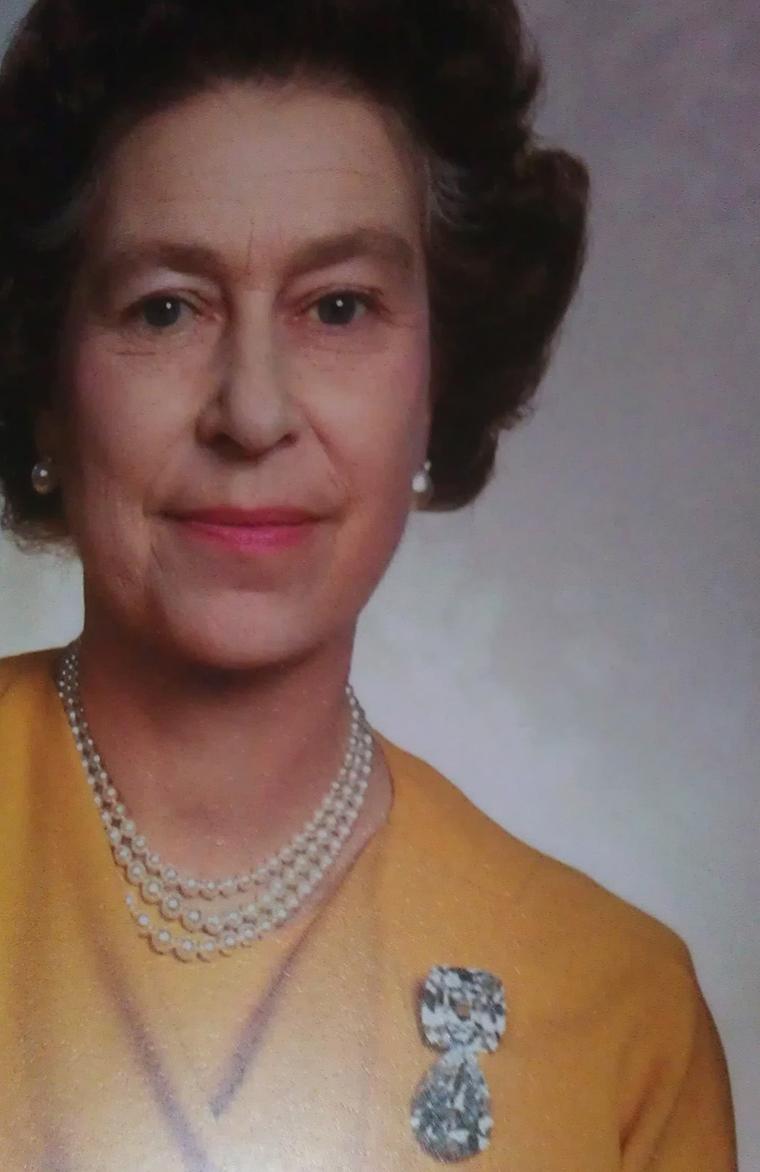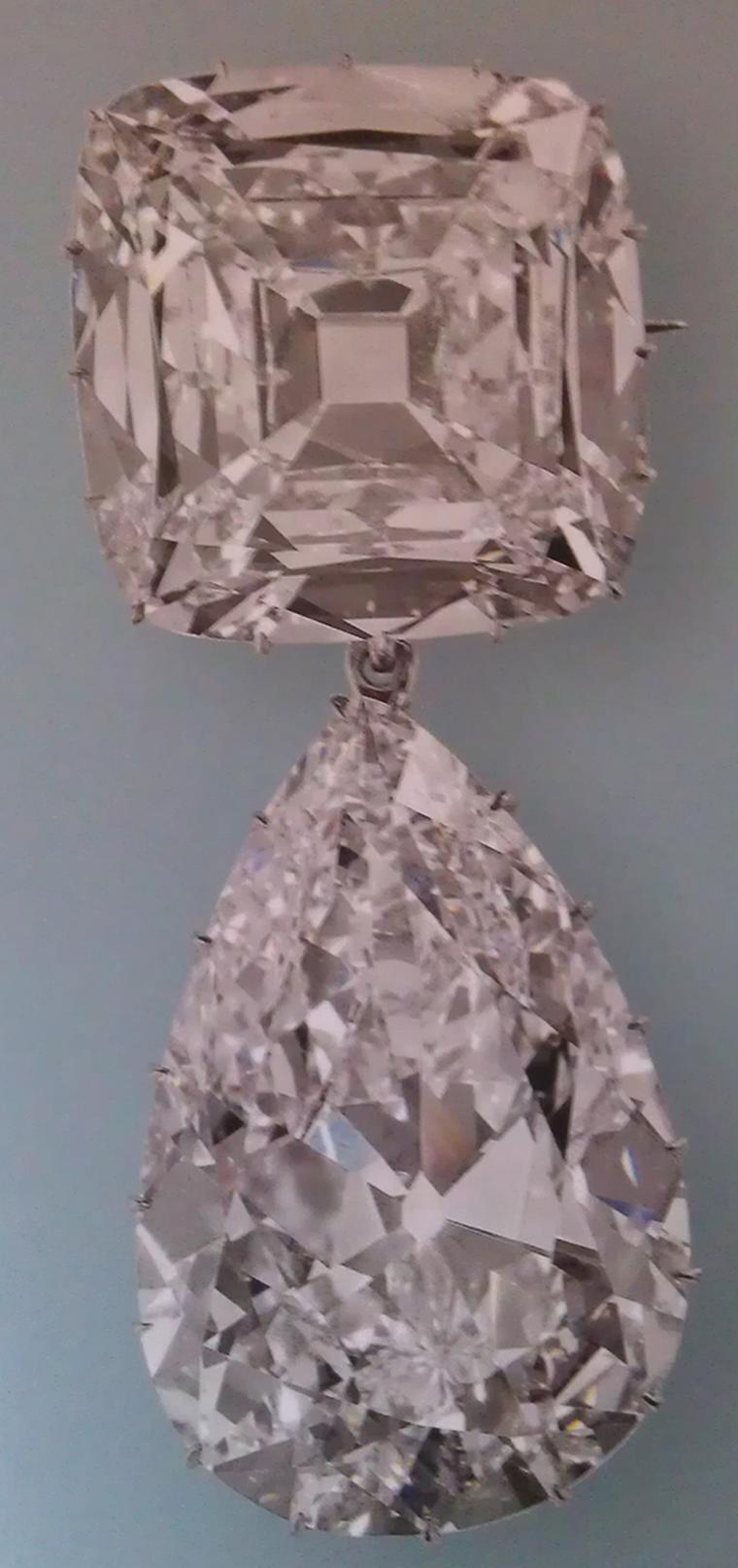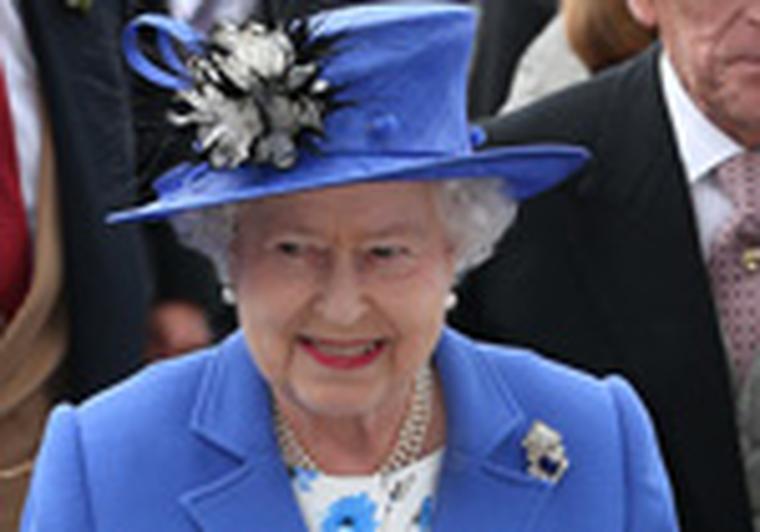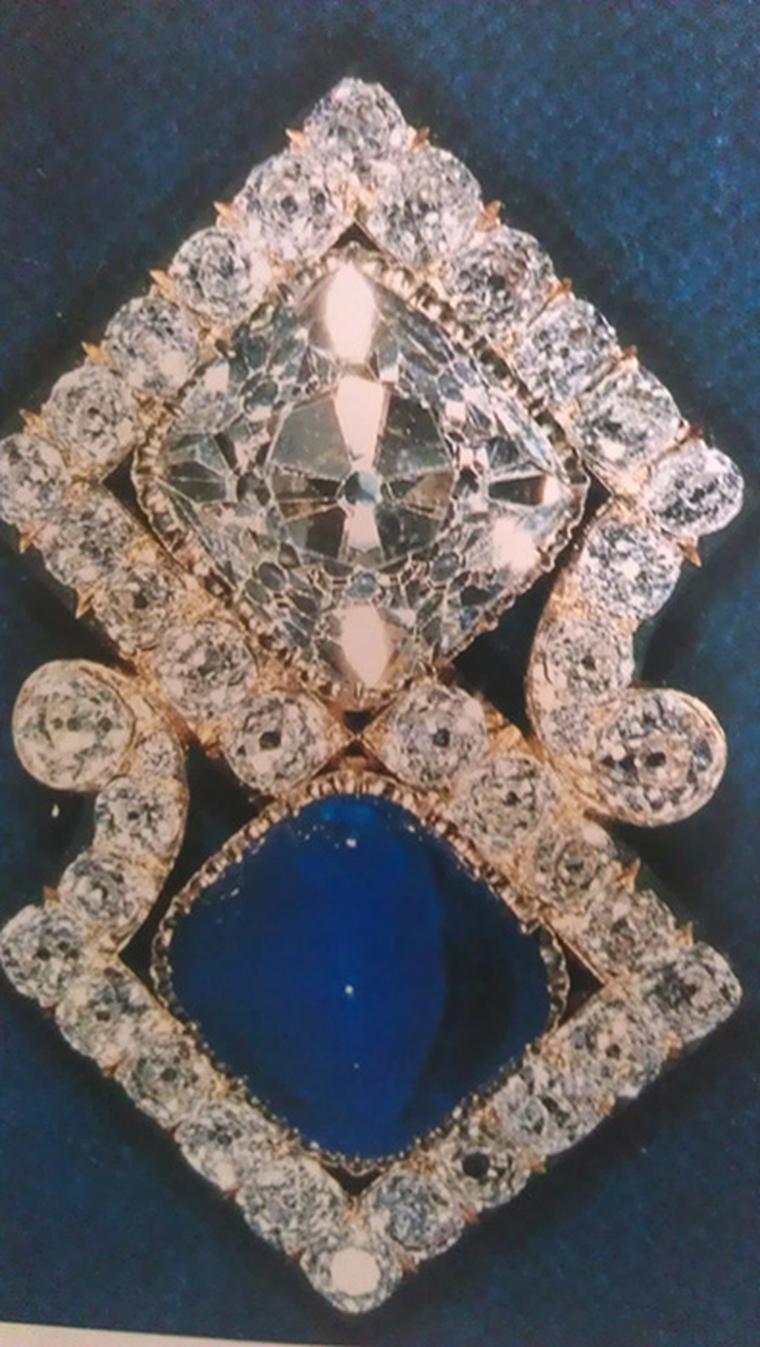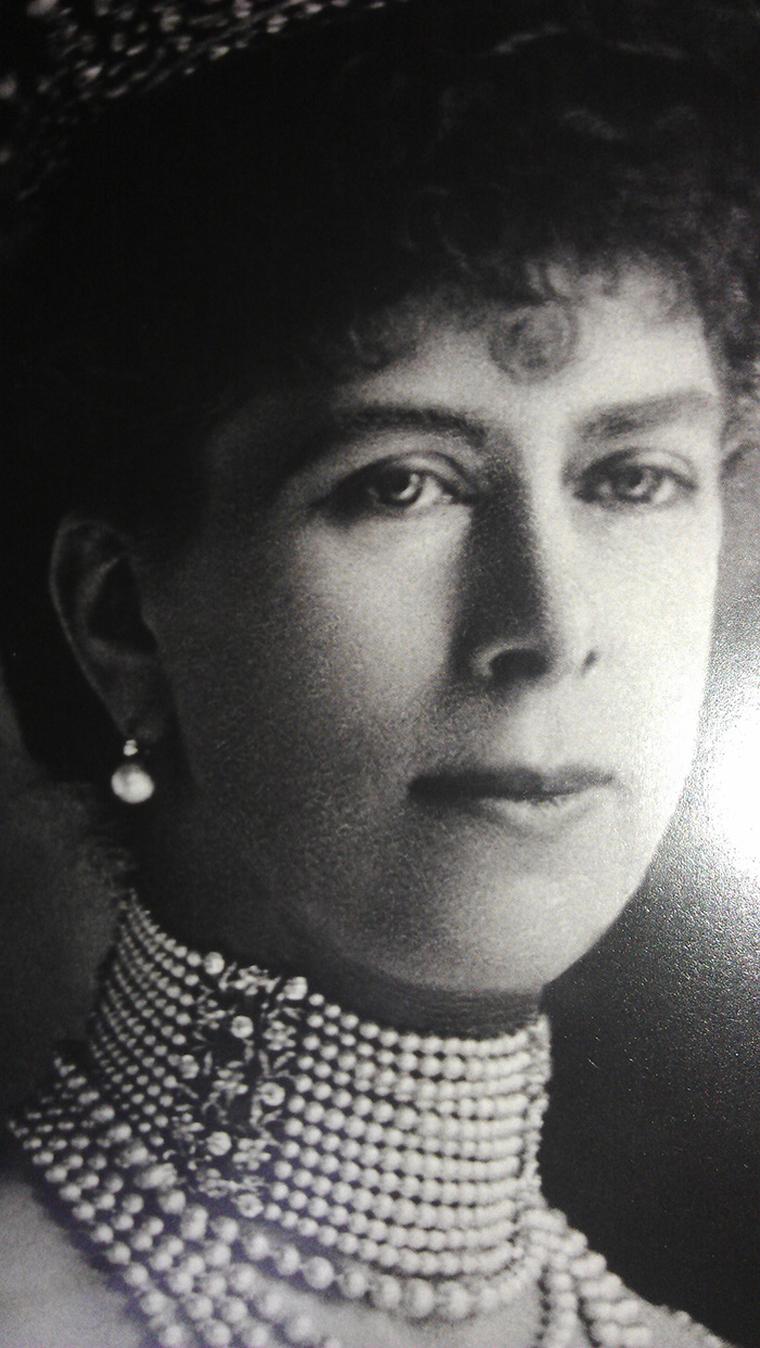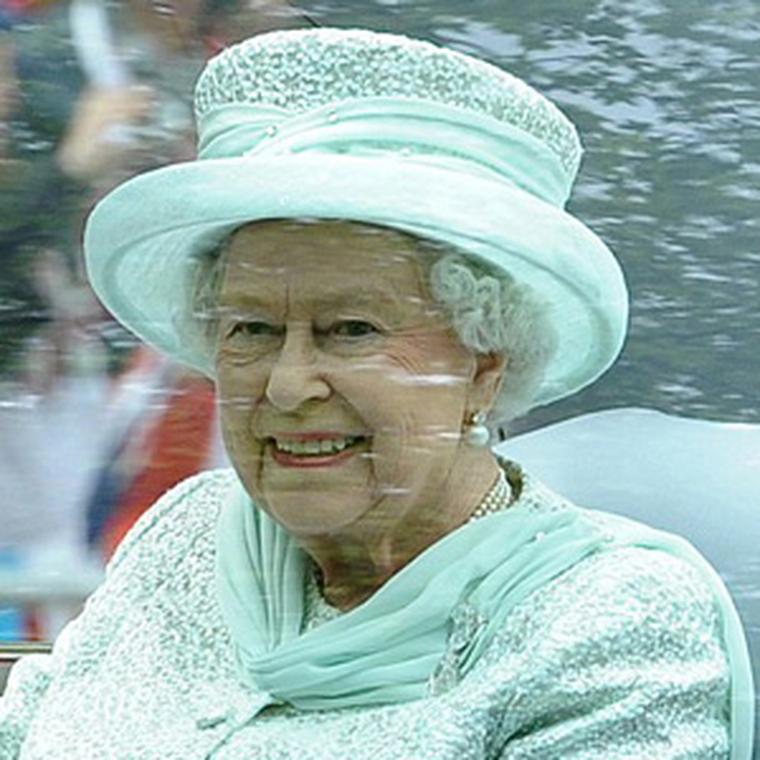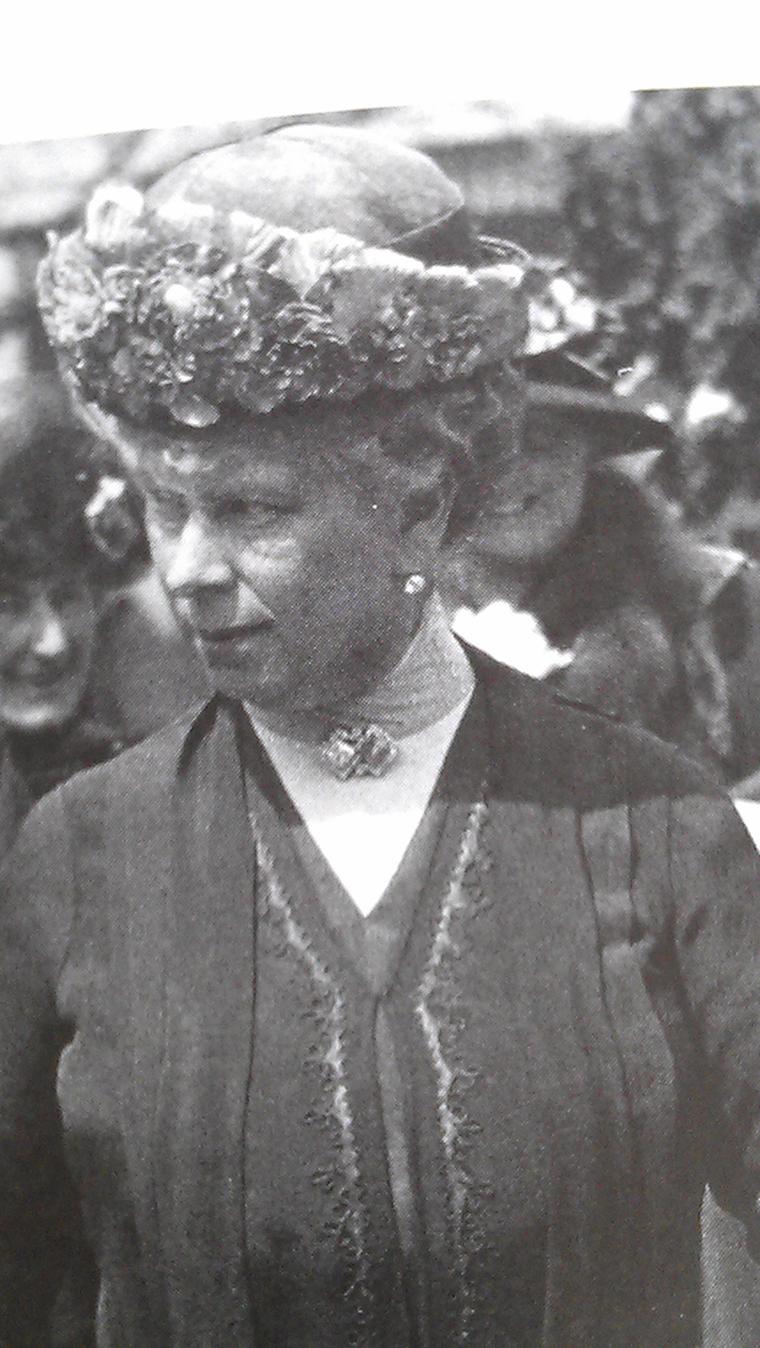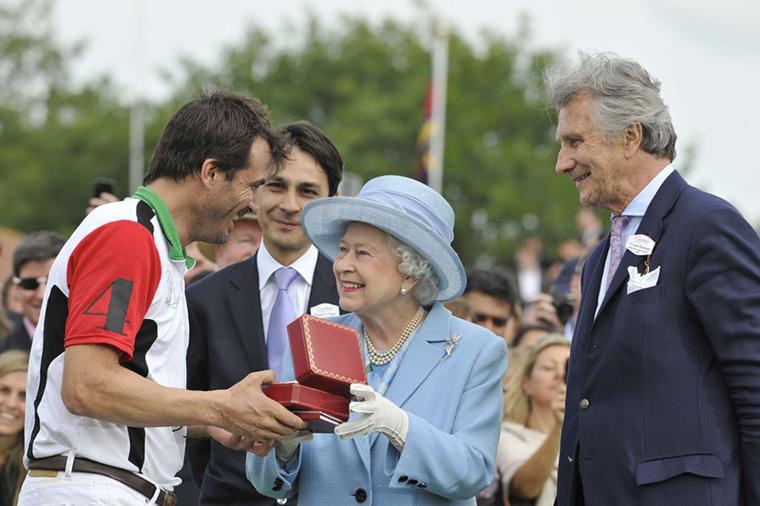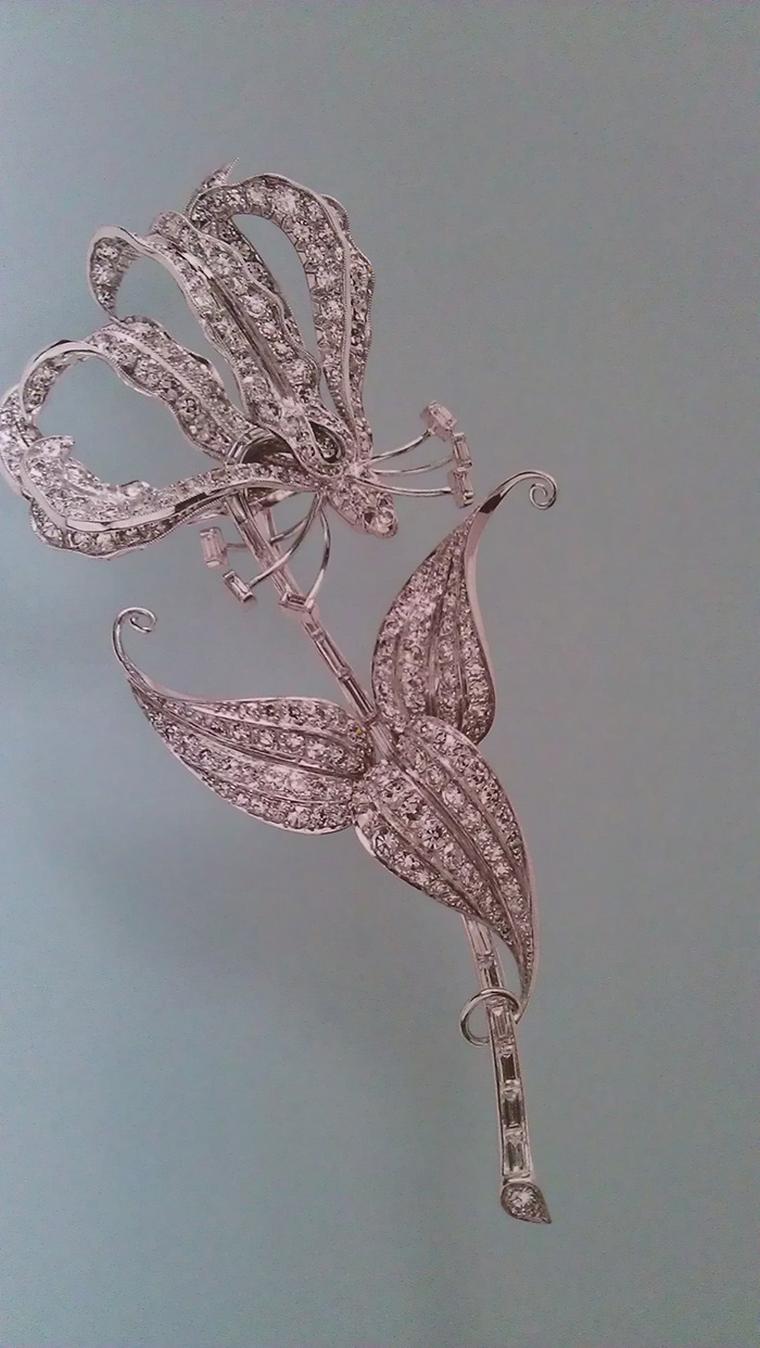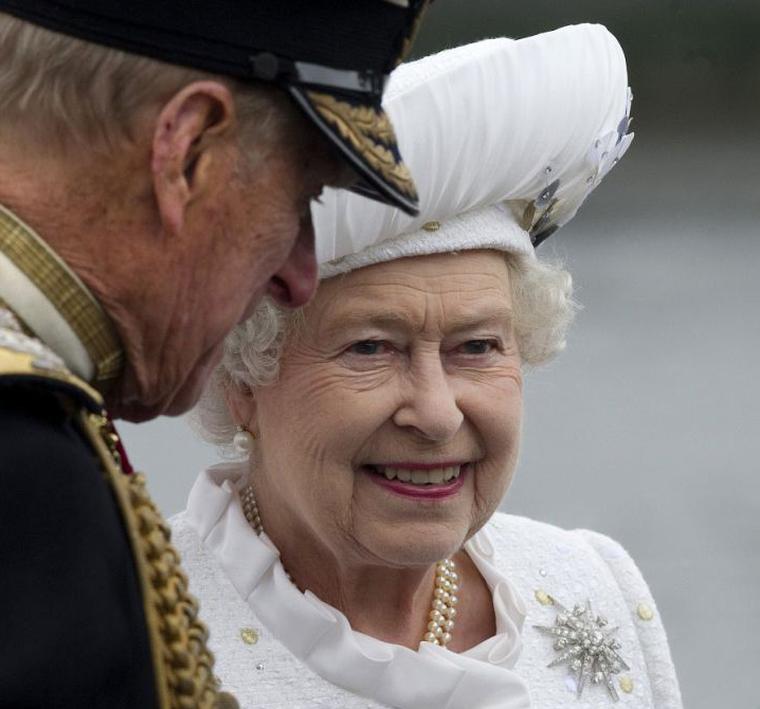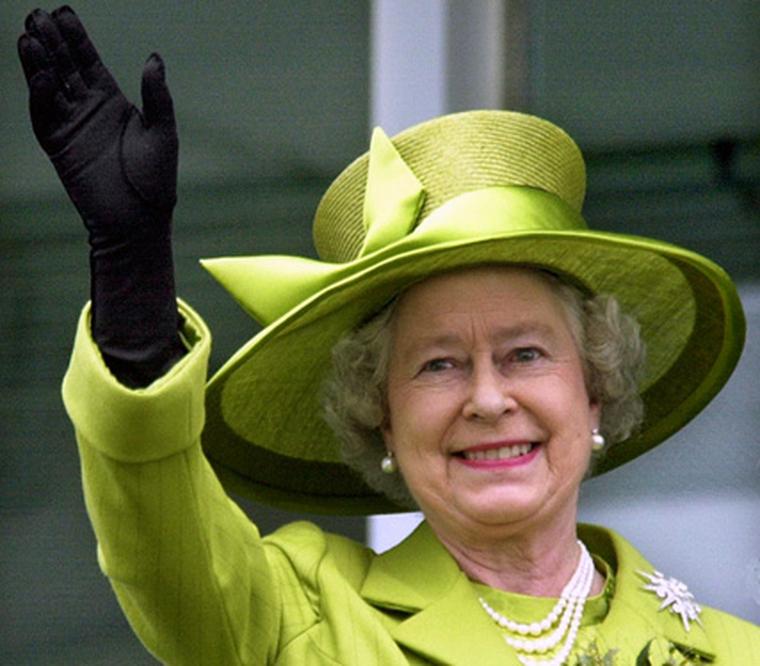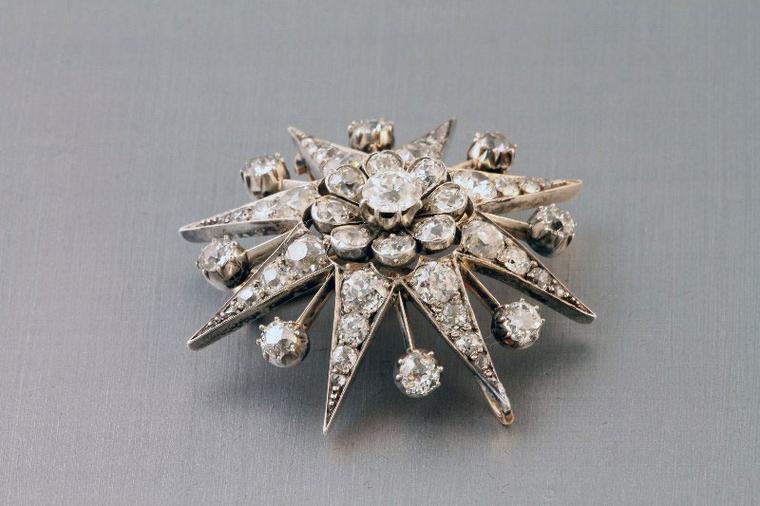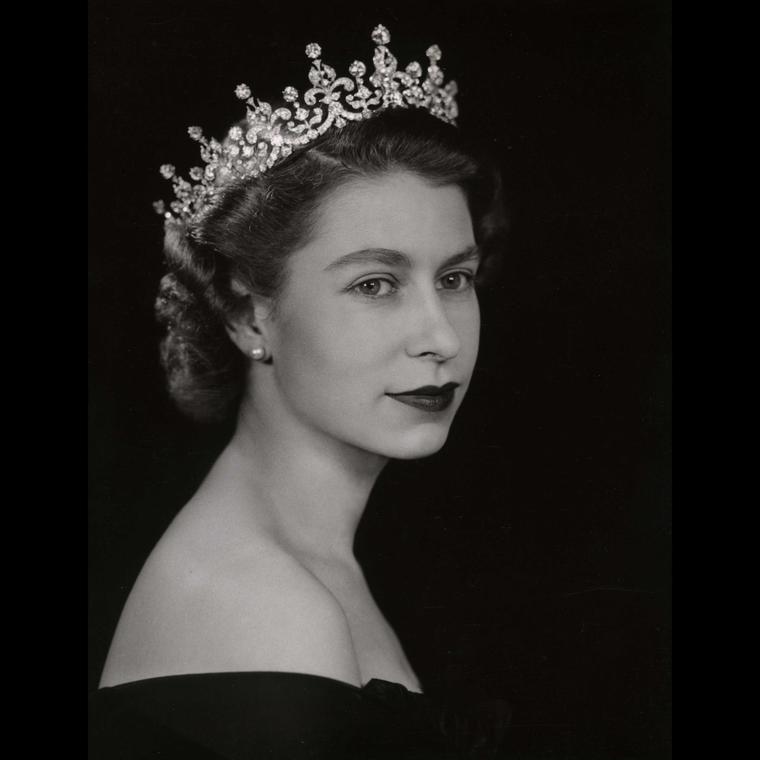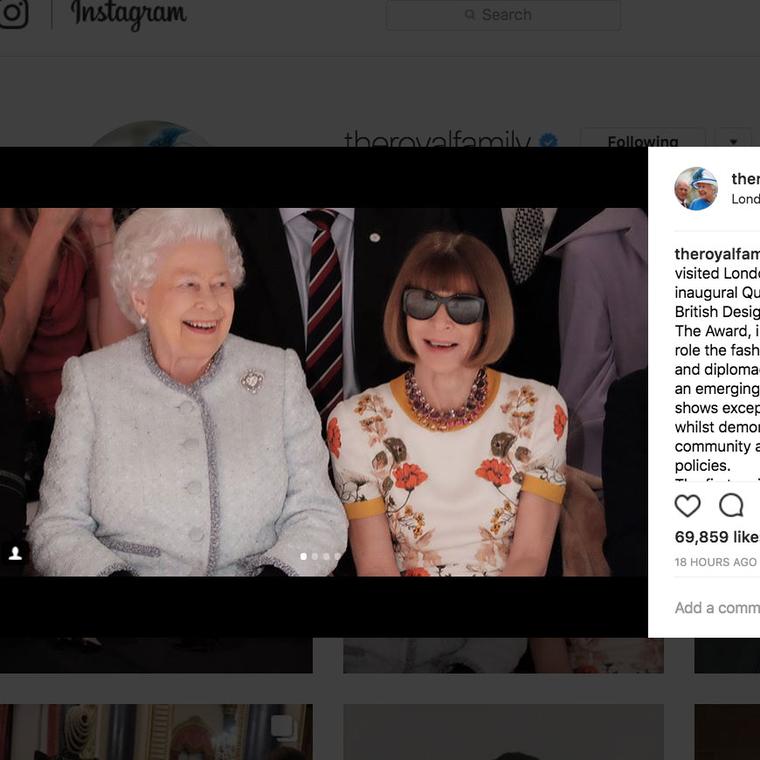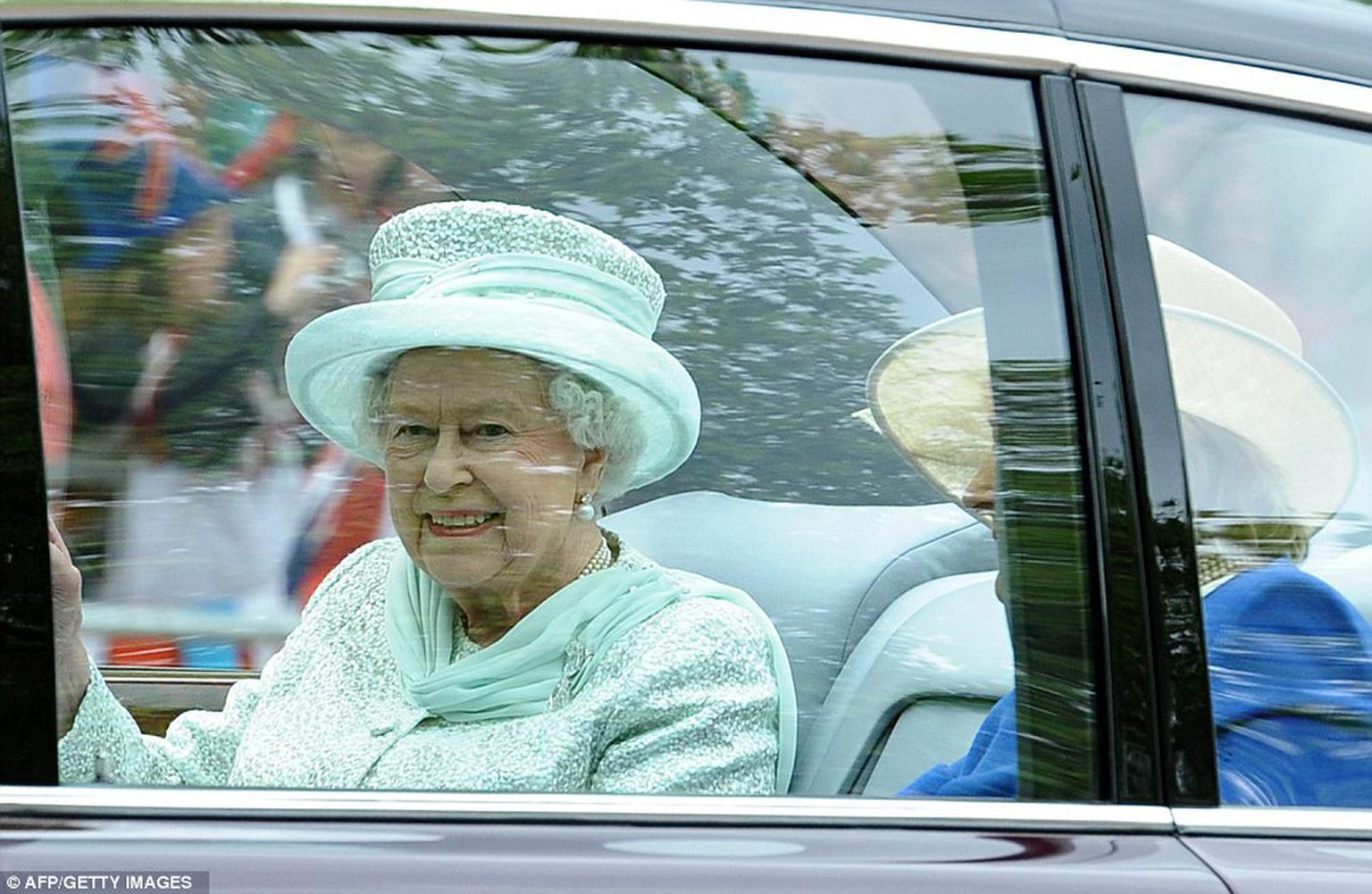
While many were noting every detail of what clothes, hat, shoes and hand bag the Queen chose for her high profile Diamond Jubilee celebrations that stretched over four rainy and overcast London days, I was looking closely at what jewels the Queen wore. And with perhaps the most valuable and historic collection of jewels, there is no better time for jewellery spotting than when the Queen is out and about.
The Queen started off the Diamond Jubilee celebrations at the Epsom Derby wearing some of her favourite jewels; a three strand pearl necklace and pearl button earrings alongside a less well-known brooch. The brooch is the Queen Mary Russian brooch featuring a large square cut diamond and sugarloaf-cut sapphire set into scroll frame.
The brooch was given to Princess May of Teck by the Empress Marie Feodorovna of Russia and in turn she left it to the Queen in 1953. While the Queen's grandmother sometimes wore the brooch horizontally, the Queen is more often seen wearing it vertically. A 1925 photograph shows Queen Mary wearing the brooch pinned to her collar horizontally, which was in keeping with the style of the day. Interesting to note that like her grandmother, the Queen has combined the Russian brooch with the same pearl button earrings with diamonds, just as her grandmother did in this photograph. An earlier picture of Queen Mary from the late 1890's shows her wearing the pearl button earrings but with the Girls of Great Britain and Ireland tiara and an eleven strand choker of pearls and five strand pearl necklace for a much more elaborate look. The Queen owns three different three strand pearl necklaces and is often wearing one of them.
The pearl button earrings were presented to Queen Mary in 1893 on behalf of the "Ladies of Devonshire" and each has a small diamond on top. They are known as the Devon earrings and were presented alongside a pearl and diamond necklace on behalf of 650 "Ladies of England" for her wedding. These jewels must have a strong sentimental value for the Queen which in part could explain why she often wears them. And if you look at the pictures of the Queen over the four days of celebrations, the pearls are always there, a sort of safety blanket that the Queen is rarely seen without. I wonder if she sleeps with them on?
For the Diamond Jubilee Thames pageant the Queen was dressed in white with pearl and diamond jewels to match her outfit. On her coat was pinned a diamond brooch in the shape of an eight-point star with a large central diamond from the late Victorian era. It was left to the Queen by Lady Jardine in 1981 and the central stone is a diamond in a collet setting. The Queen always wears her brooches high up on her left shoulder where they are highly visible. The Queen favours hats with small brims to avoid overshadowing her face and perhaps her brooches, of which she is particularly fond. She is said to own twenty different brooches and it makes sense for a Monarch to have these highly visible, large jewels that can be pinned to her coat or dress depending on the weather. And it will come as no surprise that the Queen once again wore a three strand pearl necklace of which she has three and her grandmother Queen Mary's pearl button earrings.
The Queen's outfit was chosen to stand out from the rich red and mauve and gold of the Royal Barge that was part of the 1000 strong flotilla that was the highlight of the Jubilee Celebrations. The outfit by couturier Angela Kelly was decorated with gold and silver discs as well as Swarovski crystals adding sparkle to her outfit. Had the sun shone, the effect would have been more resplendant than on the overcast and rainy day.
And 'hurrah!' I said as I spotted the Cullinan diamond brooch on the Queen's left shoulder as she set off for St Paul's for the thanksgiving service on Tuesday 5th June. I was in the gym watching the coverage on the television and didn't finish my excercises in the rush to get back and share the news.
The Queen saved the very best jewel for the very last and so it was the famous Cullinan diamonds brooch made its appearance on the last day of the Diamond Jubilee celebrations. Pinned on the left side of the Queen's silvery metallic jacket and holding in place a light mint green scarf it shone out as only two diamond of this size and quality can. Considered the most valuable of the Queen's jewels, this was the occasion to bring it out into the light of day for all to see on one if its much anticipated outings at the zenith of the Diamond Jubilee celebrations.
Though it is difficult to see the details amongst the folds of the scarf if you look at the images of the brooch you can see that the Cullinan III and IV diamonds are simply set in almost invisible platinum claws letting the diamonds sing out and light to bounce in and around these spectacular stones.
The choice was appropriate given the significance of the occasion of thanksgiving for the sixty years of the Queen's reign. Nothing more fitting than these two spectacular diamonds to mark the occasion of the Queen's Diamond Jubilee and constant service. The Archbishop of Canterbury in his sermon quoted from Proverbs 8: "wisdom is better than jewels" and he praised the Queen's joy and happiness in serving her country. "What we are marking today," said the Archbishop "is the anniversary of one historic and very public act of dedication."
The brooch is composed of two diamonds from the same 3,000 carat stone discovered in the Premier Mine in South Africa in 1905 from which the Star of Africa was hewn. The Lesser Stars of Africa that make up this brooch are the pear-drop Cullinan III that weighs 94.4 carats and hangs from the square-cut Cullinan IV of 63.3. carats. The new Transvaal Goverment bought the rough diamond from the Thomas Cullinan, the owner of the Premier Mine and presented it to King Edward VII in 1907 in recognition of the British ceding rule. King Edward VII named the largest stone the 'Great Star of Africa'.
Once safely delivered to King Edward it was decided that the stone would be cut by Asscher in Holland. Their fee was the remaining stones recovered from the rough once the two principal stones had been hewn that accounted for the majority of the mass of the stone. However, in 1910 these 102 stones were bought by the Goverment of South Africa and given to Queen Mary.
In 1911, Queen Mary had the Cullinan III and IV mounted in a lattice-work settings and placed into her new crown made by Garrard for the coronation.
The Royal Collection website tells us that: "The following year the Delhi Durbar Tiara was adapted to take both stones. Cullinan III was occasionally used as a pendant to the Coronation Necklace in place of the Lahore Diamond, and on at least one occasion Queen Mary wore this necklace with Cullinan I and II as a brooch. However, the stones were most often worn hooked together as a pendant brooch. In 1953, The Queen inherited the brooch and has worn it regularly throughout her reign."
While the two main stones, the Star of Africa I weighing 530.2 carats and second Star of Africa II weighing 317.4 carats are now part of the Crown Jewels set into the Sovereign's Sceptre with Cross and the Imperial State Crown respectively. The second Star of Africa replaced the Stuart Sapphire that was moved to the back of the crown and its current state was first used at the Coronation of George V and then George VI and Elizabeth II.
The 102 smaller diamonds given to Queen Mary and made into other jewels. Amongst these smaller stones are the Cullinan III and IV that the Queen chose to wear for the Diamond Jubilee service of thanksgiving. The Cullinan V is at the centre of the Heart Brooch and the Cullinan VI and VII form a dramatic brooch with a marquise cut pendant.
The Queen has chosen to wear lower-key jewels up until this moment and the symbolism of wearing these most valuable diamonds on this occasion is not lost on royal observers and jewellery lovers. The only other more valuable diamonds are part of the Crown Jewels and are royal regalia kept in the Tower of London.
What jewels the Queen wears is also a matter of interest to me and the jewels usually have some significance. Favouring a diamond brooch and pearl necklace and earrings combination once again, The Queen looked elegant for the the polo last Sunday. Following on from her Diamond Jubilee weekend of celebrations, The Queen wore a diamond brooch for the Cartier Queen's Cup 2012 at the Queen's Ground at the Guards Polo Club in Windsor on Sunday 17th June.
For this event, the Queen chose to wear the Flame Lily diamond brooch made in Johannesburg in 1947. According to the Hugh Roberts who wrote the book "The Queen's Diamonds" in the year of the Diamond Jubilee when all eyes are on the Queen and of course her magnificent collection of diamond jewels, this brooch was a 21st birthday present to Princess Elizabeth from the school children of southern Rhodeisa. According to the Daily Telegraph (17 May 2006) each child donated a tickey or three old pence to fund the gift. Here is the extract from Mr. Roberts' description of the piece.
"It was designed by Len Bell of the Salisbury (Harare) jeweller, H.G. Bell and made by the Cartier-trained jeweller Eric H.S. Kippin (1912-98) at Sidersky & Son in Johannesburg. The stones, which came from De Beers, were set by H. Michel. Two flame lilies were sent from Salisbury to Johannesburg to assist the craftsmen in realising Bell's design. The brooch was given to the Princess during her parents' tour of Southern Africa in 1947. Five years later, on her return to London from Kenya after the death of King George VI, The Queen wore this brooch as she alighted from the aircraft. In June 1953, two more brooches of this design, also made by Eric Kippin, were presented to Queen Elizabeth and Princess Margaret in Bulawayo, on Queen Elizabeth's first Commonwealth tour as Queen Mother. Queen Elizabeth's brooch was inherited by The Queen in 2002."
In other words, the brooch belonged to Queen Elizabeth II's mother who loaned and inherited the brooch to her.The significance of this brooch will be evident to royal watchers as this was the first jewel the new Queen was seen wearing in her new role of monarch following the death of her father. She perhaps took the brooch with her for her African trip as a mark of its African origin and on alighting in the United Kingdom wore it, maybe as a symbol of continuity of the Royal Family. This is mere speculation but I do know that the Queen chooses her jewels carefully depending not just on her outfit but the occassion and its symbolism. As to be expected, The Queen wore the pearl button earrings and a three strand pearl necklace.
But it is not all over for jewellery spotting. A never-been seen before gathering of the Queen's diamond jewels will be on display at Buckingham this summer. The exhibition "Diamonds: a Jubilee Celebration" will take place at Buckingham Palace from 30th June to 8th July, before re-opening 31st July until 7th October. Read more about the exhibition by clicking here. For more information, you can visit the Royal Collection website here.


